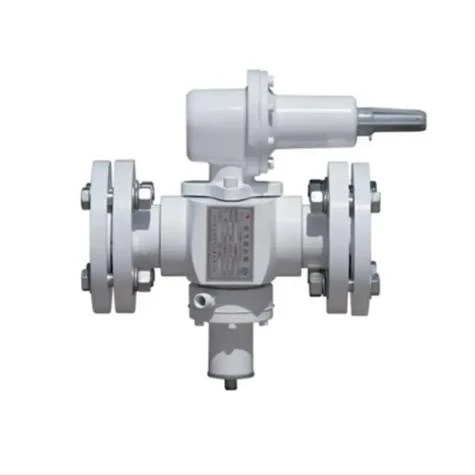
Nov . 30, 2024 01:23
Back to list
natural gas pressure reducing station
Natural Gas Pressure Reducing Stations Essential Components of Energy Infrastructure
Natural gas plays a pivotal role in the global energy landscape, serving as a crucial source of heating, electricity generation, and industrial processes. To utilize this versatile fuel efficiently, natural gas must be delivered at the right pressure to meet various operational requirements. This is where natural gas pressure reducing stations (PRS) come into play. These stations are essential components in the supply chain, ensuring that natural gas is delivered safely and at appropriate pressures to consumers.
Function and Importance
A natural gas pressure reducing station manages the pressure of natural gas as it travels from the transmission pipelines to distribution networks. High-pressure gas is transported across long distances through transmission pipelines. However, this pressure must be reduced before the gas reaches residential, commercial, or industrial users. PRS facilitates this reduction and ensures that the gas is delivered at a safe and usable pressure.
The importance of pressure reducing stations cannot be overstated. Proper pressure management is critical for safety and operational efficiency. Excessively high pressure can lead to infrastructure damage, leaks, or even explosions. Conversely, if the pressure is too low, it can result in inadequate gas supply to consumers, affecting heating and production processes. Additionally, PRS units help to maintain consistent pressure levels within the distribution network, which is essential for system reliability.
The Components of a Pressure Reducing Station
A typical natural gas pressure reducing station includes several key components that work together to manage gas pressure effectively. These components are designed to withstand high pressures and ensure safe operation.
1. Control Valves At the heart of a PRS are control valves that regulate the flow of natural gas by adjusting the pressure based on system demands. These valves open or close to maintain the desired output pressure, ensuring that gas is supplied within specified limits.
2. Safety Devices Safety is a top priority in PRS design. Various safety devices, such as pressure relief valves, are integrated into the system to prevent overpressure situations. In case of a malfunction, these valves release excess gas to protect the infrastructure and the public.
natural gas pressure reducing station

3. Filters Natural gas often contains impurities and particulates that can cause damage to equipment downstream. Filters are installed in PRS to remove these contaminants, ensuring the gas delivered to consumers is clean and safe.
4. Monitoring Systems Modern pressure reducing stations are equipped with advanced monitoring systems that provide real-time data on pressure levels, flow rates, and system performance. These systems allow operators to respond quickly to any anomalies, ensuring continuous and reliable service.
5. Telemetry and Control Systems Many pressure reducing stations are connected to centralized control systems that enable remote monitoring and management. Telemetry systems transmit data regarding the operation of the station, allowing for efficient oversight and timely maintenance.
Emerging Trends and Innovations
As the energy landscape evolves, so too does the technology associated with natural gas pressure reducing stations. One significant trend is the integration of smart technology and automation. Smart PRS systems can optimize gas flow and pressure management based on real-time demand, enhancing efficiency and reducing operational costs.
Additionally, there is a growing emphasis on sustainability within the natural gas industry. Pressure reducing stations are being designed with more energy-efficient components and practices to minimize their environmental impact. Furthermore, as renewable energy sources continue to gain traction, PRS may also play a role in managing hydrogen blends with natural gas, paving the way for a more sustainable energy future.
Conclusion
Natural gas pressure reducing stations are vital for the safe and efficient delivery of natural gas to consumers. By managing gas pressure effectively, these stations protect infrastructure, enhance operational reliability, and ensure a consistent energy supply. As technology continues to advance and the energy landscape shifts, the role of PRS will become increasingly important, embodying the balance between traditional energy resources and the push toward sustainability. Understanding and optimizing the functionality of natural gas pressure reducing stations is crucial for both current operations and future innovations in the energy sector.
Latest news
-
Safety Valve Spring-Loaded Design Overpressure ProtectionNewsJul.25,2025
-
Precision Voltage Regulator AC5 Accuracy Grade PerformanceNewsJul.25,2025
-
Natural Gas Pressure Regulating Skid Industrial Pipeline ApplicationsNewsJul.25,2025
-
Natural Gas Filter Stainless Steel Mesh Element DesignNewsJul.25,2025
-
Gas Pressure Regulator Valve Direct-Acting Spring-Loaded DesignNewsJul.25,2025
-
Decompression Equipment Multi-Stage Heat Exchange System DesignNewsJul.25,2025

